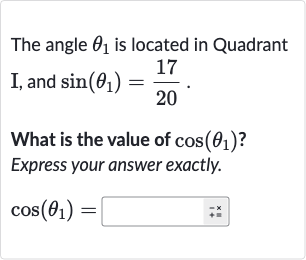Full solution
Q. The angle is located in Quadrant I, and .What is the value of ? Express your answer exactly.
- Step : Substitute in the Pythagorean identity: We know that . Use the Pythagorean identity to find the value of .Substitute for in ..
- Step : Simplify the equation: Simplify to find the value of .
- Step : Calculate : Since is in Quadrant I, where all trigonometric functions are positive, will be positive.Therefore, ...

